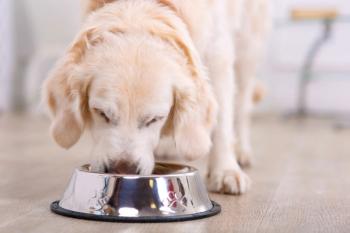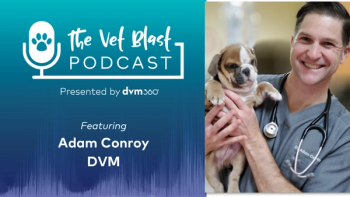
Wheat Ridge Animal Hospital embraces past, reaches out to future
Over the past 57 years, the Wheat Ridge Animal Hospital near Denver has grown from a one-doctor operation to a practice with close to 100 employees, a year-round schedule and cutting-edge technologies.
Wheat Ridge, Colo. — Over the past 57 years, the Wheat Ridge Animal Hospital (WRAH) near Denver has grown from a one-doctor operation to a practice with close to 100 employees, a year-round schedule and cutting-edge technologies.
And it is that strong history that makes WRAH stand out from other practices, says Dr. Donald Ostwald, who owns the practice with fellow veterinarians Drs. Lenny Jonas and Lori Wise, and hospital administrator Marianne Mallonee.
Ready for the future: Wheat Ridge Animal Hospital in Colorado has grown from a one-doctor small-animal practice in 1955 to a 26-veterinarian operation today. (Photo courtesy of Wheat Ridge Animal Hospital.)
While WRAH has seen a number of changes over the years, their goal has remained the same—to provide the finest quality of care to the patients and their owners in a caring and compassionate environment.
Yesterday, that goal was accomplished by Dr. Ed Swena, who established the small-animal practice in 1955.Today, 26 veterinarians, 40 technicians, 15 customer care representatives, 10 assistants and eight administrators set the bar high and make sure their clients' needs are still being met.
Since 1963, WRAH has been accredited with the American Animal Hospital Association (AAHA), which validates that the practice meets the highest standards in the profession, says Nadja Torling, practice manager of client relations. She added that WRAH recently became one of the first hospitals in the United States to become accredited through the new AAHA referral practice standards.
"We are looking forward to being a 50-year member next year," Ostwald says.
WRAH is made up of three components—general practice, specialty and emergency/critical care.
Approximately 3,000 clients make up the general practice caseload, which accounts for 20 to 25 percent of the business, Ostwald says. The general practice treats everything from wellness care to medical, surgical or dental problems.
The next component, the specialty component, was added in 1978 when Dr. Doug Teague, a board-certified surgeon, joined the practice. But it was a merger in 1994 with Denver Veterinary Specialists, founded by Jonas, that really expanded the general practice and specialty referral components.
Ostwald added that the specialty-care component is closely tied to the emergency care component which was added in 1996 when WRAH moved to its current location and began offering 24-hour emergency care. Emergency and specialty care now account for 75 to 80 percent of the business.
"Emergency/specialty care actually fits very closely together because our primary clients are other veterinarians who are sending their clients to us," Ostwald says. "The majority of our referrals come from veterinarians all over Colorado. We've even had clients from Arizona, New Mexico, Wyoming and Utah."
Ostwald is also proud of the internship program at WRAH that began in 1997. Each year, eight interns, usually new graduates at the top of their classes, rotate through all areas of the hospital. While the interns rotate, the other doctors stay with one particular component.
"We have four general practitioners," he says, adding specialists include surgeons, internists, oncologists and an acupuncturist.
WRAH was not immune to the economic downturn felt across the country.
"Our emergency and surgery services have taken a big hit over the past three years," Ostwald says. "Those are unfortunately the high-dollar items and when people don't have the money, they can't afford to do a lot. We have to provide alternate treatments and options."
Ostwald did say they are starting to see a turnaround.
Torling adds that staffing turnover has been a little higher over the past few years. "However, the employees we have lost tend to leave us for good reasons—acceptance into vet school, moving out of state or a decision to be a stay-at-home parent," she says.
Looking to the future, in 2010 WRAH joined with four other large specialty emergency practices—with 14 facilities all together—from across the United States to form a management network named Member Owned Organizational Network (MOON).
"We are working to develop an electronic medical record program geared toward referral specialty practices," Ostwald says. "We also have joint efforts underway for purchasing, marketing and HR training. This has been very beneficial to us and has created some great collaborations."
Closer to home, WRAH offers continuing education for veterinarians in the area. "We do lunch and learns, day-long seminars and evening dinners about topics of interest," Ostwald says. "It offers more one-on-one conversations."
Thanks to a combination of a strong history, hard work and a look to the future, Torling says, "WRAH is one of the top veterinary hospitals in the United States."
Newsletter
From exam room tips to practice management insights, get trusted veterinary news delivered straight to your inbox—subscribe to dvm360.






